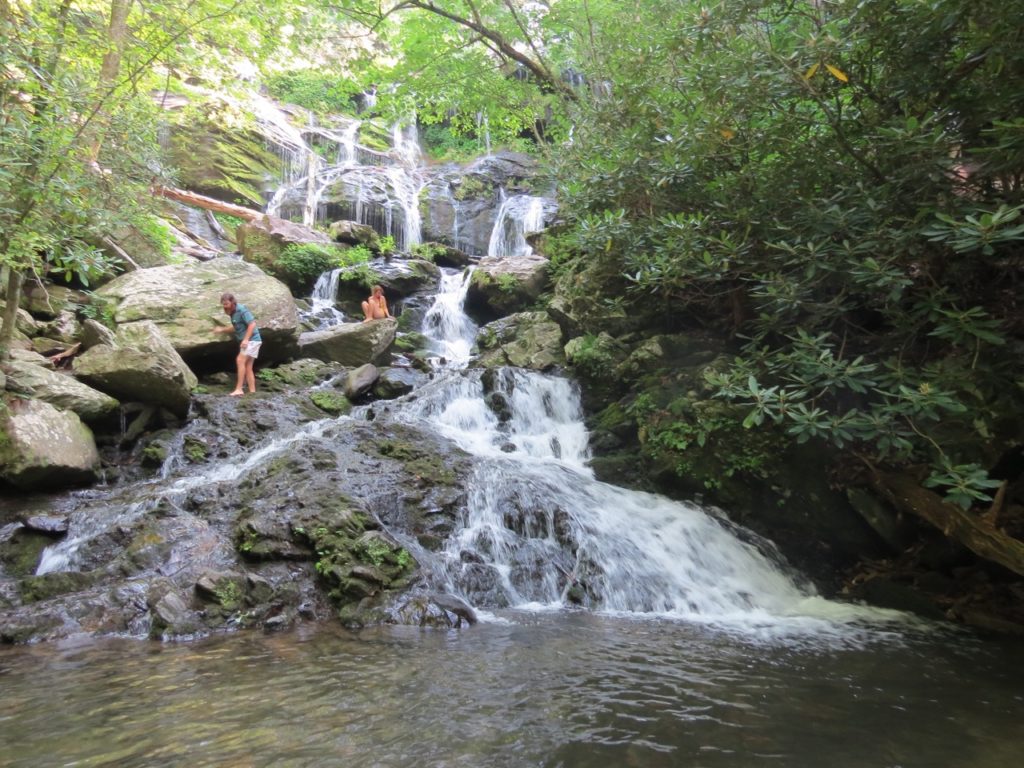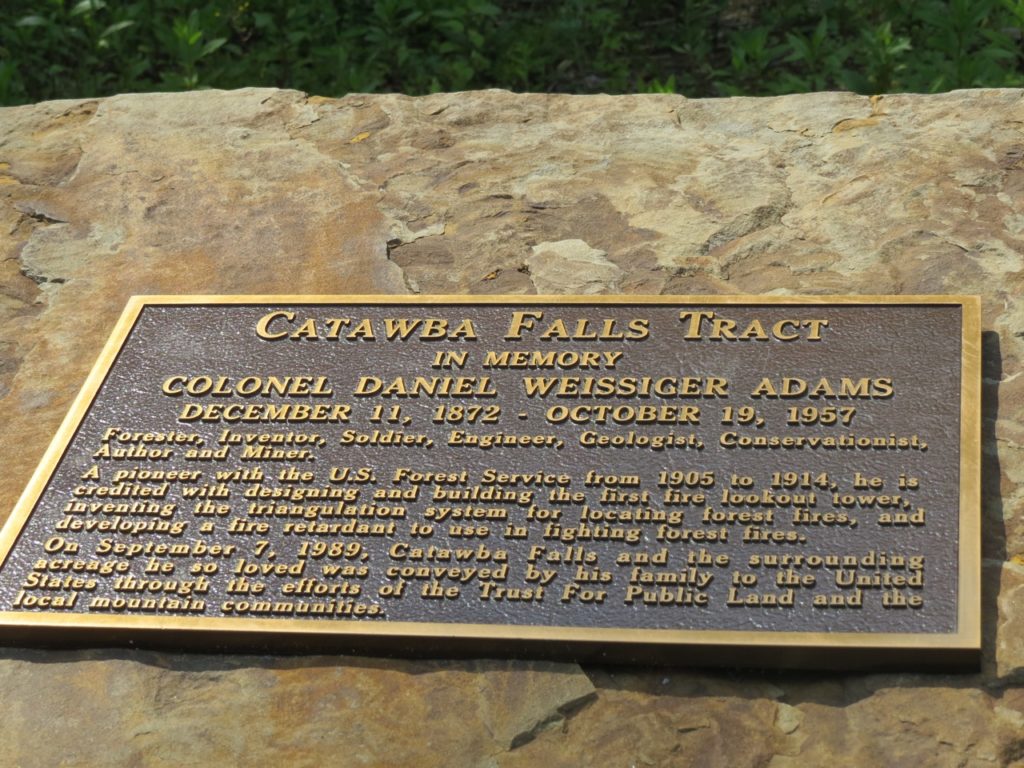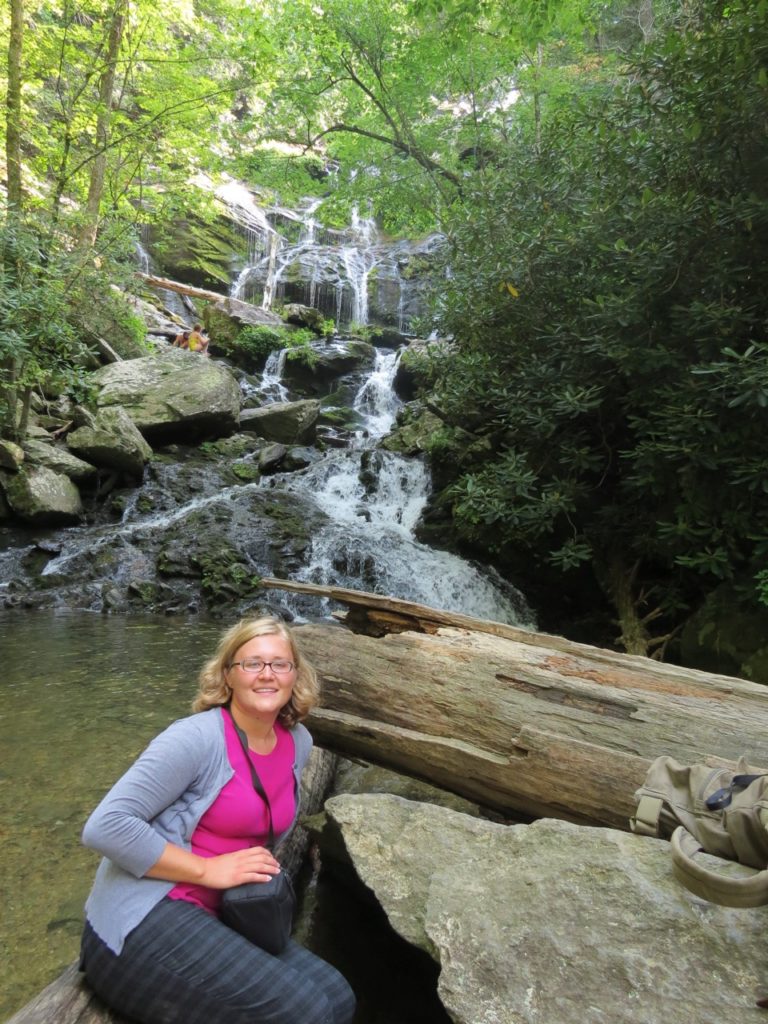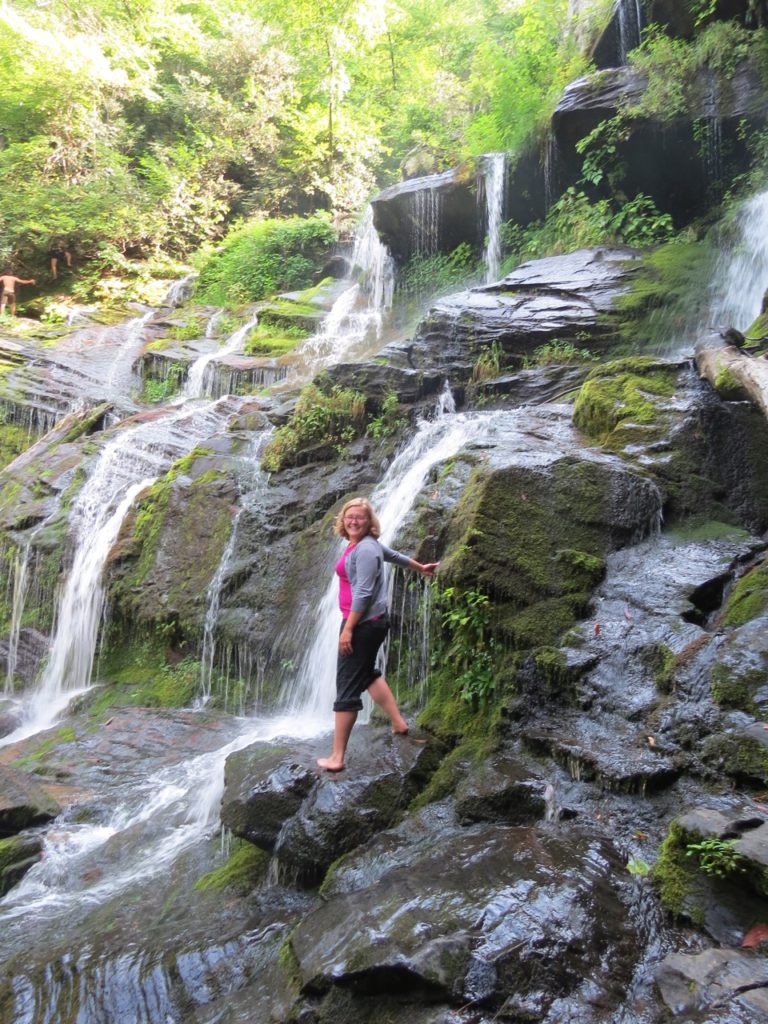
by Crystal Cockman
1/24/2018
 A few years back, I went to a program celebrating 50 years of the Land and Water Conservation Fund with then Secretary of the Interior Sally Jewell and Senator Richard Burr at the Blue Ridge Parkway Visitor Center in Asheville. I’ve written about the Land and Water Conservation Fund before, which is an important source of funding for expanding national public lands. LWCF derives its funding not from taxes, but rather from royalties paid by private gas companies who are extracting publicly owned oil and minerals from federal waters in the outer continental shelf. It was ironically on the way home from this same trip that I visited a newly acquired US Forest Service access to the beautiful Catawba Falls.
A few years back, I went to a program celebrating 50 years of the Land and Water Conservation Fund with then Secretary of the Interior Sally Jewell and Senator Richard Burr at the Blue Ridge Parkway Visitor Center in Asheville. I’ve written about the Land and Water Conservation Fund before, which is an important source of funding for expanding national public lands. LWCF derives its funding not from taxes, but rather from royalties paid by private gas companies who are extracting publicly owned oil and minerals from federal waters in the outer continental shelf. It was ironically on the way home from this same trip that I visited a newly acquired US Forest Service access to the beautiful Catawba Falls.
Foothills Conservancy out of Morganton NC worked for several years to obtain a critical access to Catawba Falls. The Falls themselves were on US Forest Service land, but the 88-acre property that provided the only physical access to the falls was privately owned. It was also originally outside of the proclamation boundary of the US Forest Service, which is the area in which they can acquire land. It took an act of Congress to obtain the extension of the proclamation boundary to include this property, before they could even seek the funds for US Forest Service to acquire the tract.
 A few years before that, I was on a trip to Washington D.C. to talk to our legislative leaders about the Land and Water Conservation Fund and our projects that we were seeking funding for, at that time it was the acquisition of King Mountain in the Uwharries. Along on that trip, and my roommate for the trip, was Susie Hamrick-Jones, then the executive director of Foothills Conservancy, and she was advocating for acquisition of this Catawba Falls access. In fact, we took the time to speak with our legislators together about both projects. Fortunately, both of these properties are now in public ownership.
A few years before that, I was on a trip to Washington D.C. to talk to our legislative leaders about the Land and Water Conservation Fund and our projects that we were seeking funding for, at that time it was the acquisition of King Mountain in the Uwharries. Along on that trip, and my roommate for the trip, was Susie Hamrick-Jones, then the executive director of Foothills Conservancy, and she was advocating for acquisition of this Catawba Falls access. In fact, we took the time to speak with our legislators together about both projects. Fortunately, both of these properties are now in public ownership.
 Catawba Falls is near the town of Old Fort, and it is just off Interstate 40 on Catawba River Road. There is now a 3-mile round trip hike along the scenic headwaters of the Catawba River where you can see the 100-foot tall cascading waterfall. There is a parking area now complete with restrooms, and it is just a short walk from there to the falls. More recently, new footbridges have been installed on the trail, which make the hike easier. As you start out from the parking lot, you follow an old wagon road and there are several stone foundations from the early 1900s along the trail, including the dam once constructed here for hydroelectric power. Do not stand on the dam as it is dangerous.
Catawba Falls is near the town of Old Fort, and it is just off Interstate 40 on Catawba River Road. There is now a 3-mile round trip hike along the scenic headwaters of the Catawba River where you can see the 100-foot tall cascading waterfall. There is a parking area now complete with restrooms, and it is just a short walk from there to the falls. More recently, new footbridges have been installed on the trail, which make the hike easier. As you start out from the parking lot, you follow an old wagon road and there are several stone foundations from the early 1900s along the trail, including the dam once constructed here for hydroelectric power. Do not stand on the dam as it is dangerous.
The hike goes to the lower Catawba Falls, where there is a nice flat area for viewing the falls. There is a trail to the upper Catawba Falls but it is extremely difficult and dangerous, and is officially closed for now. The US Forest Service is working on a safe trail to the upper Catawba Falls but it is not complete yet. Even on the lower Catawba Falls, you must be careful on the slippery rocks around the waterfall or you could fall and be seriously injured. For more information you can contact the Grandfather Ranger District at (828) 652-2144.
 Consider stopping by Catawba Falls on your next trip to Asheville. It will be worth your time to see this natural wonder. Thanks to Foothills Conservancy for providing the public access to this beautiful gem.
Consider stopping by Catawba Falls on your next trip to Asheville. It will be worth your time to see this natural wonder. Thanks to Foothills Conservancy for providing the public access to this beautiful gem.
Since their founding in 1995, Foothills Conservancy has permanently protected more than 51,000 acres. Foothills Conservancy is a nationally accredited regional land trust, is dedicated to working cooperatively with landowners, communities, and public and private conservation partners to preserve and protect important natural areas and open spaces of the eastern Blue Ridge Mountains and Foothills, including watersheds, environmentally significant habitats, forests, and farmland, for this and future generations. They serve eight counties: Alexander, Burke, Caldwell, Catawba, Cleveland, Lincoln, McDowell, and Rutherford. You can learn more about Foothills Conservancy on their website at https://foothillsconservancy.org/.